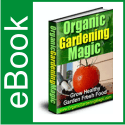Understanding much more about Heritage Tomato Seeds and Heirloom Tomato Seeds
Understanding much more about Heritage Tomato Seeds and Heirloom Tomato Seeds
Article by Town Sweatman
Numerous of our traditional vegetable varieties are vanishing at an alarming rate. Lately, it has turn out to be more and more tough to purchase seeds of numerous as soon as typical non-hybrid heritage vegetable seed varieties from the catalogues of conventional seed businesses. The lists of commercial seed companies are dwindling down to a few offerings which are dominated by modern, F1 hybrids. The steady elimination of non-hybrid (open pollinated) vegetable varieties from these seed catalogues has been huge. This has occurred all through Europe and within the USA and Canada. It is a serious loss, the consequences of which might not be fully realized till years later.
Main Causes
1. Dominance of Multinational Seed Businesses — This really is a fairly recent improvement. It was till about 50–60 years ago that many people saved their very own seeds, frequently passing them down from 1 generation to the subsequent, like family heirlooms.
When seed companies first started to seem, they had been generally small family-based companies, but as plant breeding techniques enhanced and herbicides and pesticides had been created, large multinationals started investing in seed businesses, which resulted in little firms either being purchased out by the larger businesses, or simply closing up simply because they couldn’t compete. The large seed businesses, seeing only dollar signs, want to sell only F1 hybrids.
F1 hybrids usually will give a higher yield than conventional varieties, but they need chemical fertilizers, pesticides, fungicides and herbicides to be able to survive. Guess who sells these goods? Why the big seed companies obviously!
Traditional varieties have a greater natural resistance to disease, which means that they do not need big inputs of artificial chemicals to grow and thrive. So logically the large seed businesses can make a larger profit if they sell F1 hybrids.
Also, F1 hybrids are able to grow nicely in a wide range of climates. Traditional varieties usually do best if grown within the local conditions to which they are adapted. That’s why sales of F1 hybrid seeds are significantly greater.
Final, but not least, when the seeds of F1 hybrids are saved, they don’t offer great crops within the following season. This necessitates that growers buy new seeds annually from the suppliers, which raises their seed sales quite a little.
2. Contemporary Farming
A lengthy time ago when traditional farming was the only method to go, farmers would develop many various varieties of a wider range of crops and also the crops were harvested over a longer time period. Now that method has fallen by the wayside, simply because it’s easier and an excellent deal more profitable for modern farmers to develop just a couple of varieties of crops. These crops then ripen at the same time and are harvested by machine. F1 hybrids are now grown on most each and every farm instead of the conventional varieties because they have more predictable harvest times.
3. Industrialization
In the industrialized nations it’s only a little portion of fresh generate which is now sold locally through small shops like greengrocers. Supermarket chains are now buying up nearly all of the fresh generate, because that’s exactly where many people do their shopping. Supermarkets now dominate the marketplace and growers are under pressure to grow only the varieties that the supermarkets want to buy from them.
What this means, is the fact that essentially there is no longer very significantly space or demand for heritage vegetable seeds or heritage vegetable plants. But people are getting smarter, and more and more people are growing these seeds and plants in their gardens for the value of their taste and also the reality that they can be grown organically.
About the Author
Please visit heirloom tomato seeds for more information and huge bonus..
Use and distribution of this article is subject to our Publisher Guidelines
whereby the original author’s information and copyright must be included.

 August 23, 2012
August 23, 2012 







